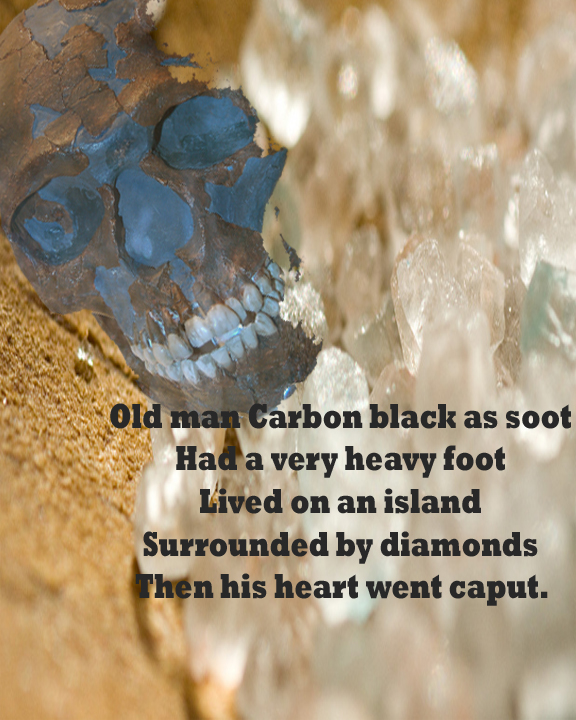Organic chemistry is about carbon containing compounds and thus it is also about us. Scientists described almost ten million organic compounds formed by carbon. On the Earth carbon is the main constituent of many minerals and biological molecules. Inorganic carbon is contained in carbonate rocks: the hard sedimentary rocks limestones, the translucent sedimentary rocks dolomites, white crystalline marbles, and in carbon dioxide (CO2); it occurs in organic deposits such as coal, peat, oil, and a natural gas methane hydrate. Carbon is present in all life forms and is crucial for life on Earth because it forms many bonds to form complex organic molecules (carbon makes up to four bonds per atom). Strong carbon-carbon bonds to other carbon atoms combine into long, strong, stable, rich in energy chains and rings, such as in a DNA that is made of two intertwined molecules built around a carbon chain. The carbon exchange results from the chemical, physical, geological, and biological processes.
Carbon exists in the atmosphere as carbon dioxide (810 gigatonnes of carbon; one gigatonne = 109 metric tons, = 1015 grams), in water bodies (36,000 gigatonnes of carbon), and in the biosphere (1,900 gigatonnes of carbon). The amount of carbon in simple organic compounds (carbon plus hydrogen) of hydrocarbons, such as coal, petroleum, and natural gas, is around 900 gigatonnes. Carbon dioxide is the most important human-contributed greenhouse gas (which absorbs and emits infrared radiation) resulting in the greenhouse effect.
Carbon combines with hydrogen and oxygen into carbohydrates, which are present as soluble, crystalline sugars, starch, and cellulose; plant lignans; chitins found in exoskeletons (external covering of bodies, in contrast to internal skeletons such as in humans) of crabs, lobsters, shrimps, insects, shells of mollusks, and forming walls of fungi. Carbohydrates are present also in alcohols, fats, aromatic esters, in carotenoids – pigments found in plants, fungi, and bacteria; and terpenes produced by many plants (especially conifers) and insects such as termites and some butterflies.
A chemical element carbon C has atomic number 6. Carbon nucleus contains 6 protons (subatomic particles present in atomic nuclei, having positive electric charge equal to the negative charge of an electron) and 8 neutrons (which have the mass similar to that of a proton, but do not have an electric charge). Carbon isotopes have 2–16 neutrons. As a nonmetallic element, carbon in its solid form is dull and brittle, forms acidic molecules with oxygen, and has a tendency to attract electrons, making four electrons available to form very strong covalent chemical bonds (with pairs of electrons shared between atoms). It does not react with oxidizers at room temperature; when heated, it forms carbon oxides, which are used in the iron and steel industry. Carbon atoms can form covalent bonds to many other types of atoms and form many materials such as wood or body cells.
